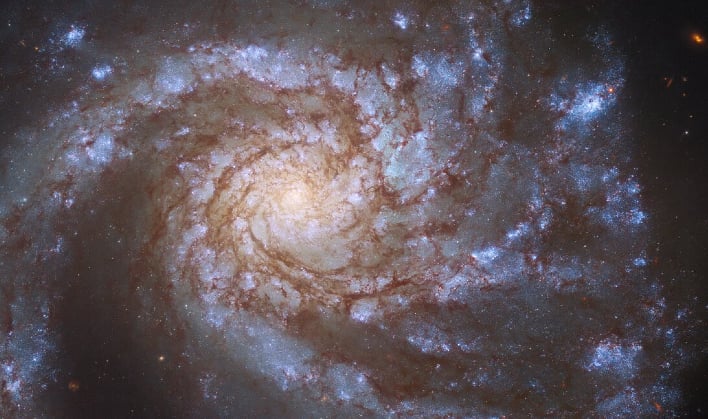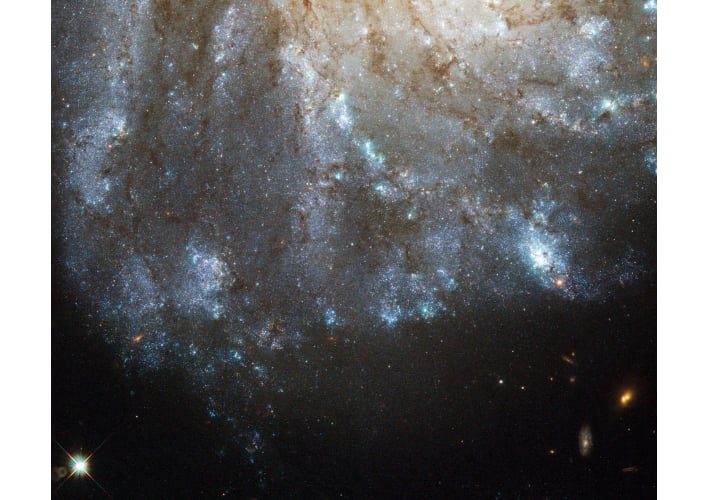Breathtaking Hubble Image Shows A Grand Design Of A Spiral Galaxy 42M Light Years Away

Messier 99, or M99, is an example of a "grand design" spiral galaxy due to it being so well-defined, with prominent spiral arms that are visible in the top image. The image of M99 was captured twice by NASA/ESA Hubble's Wide Field Camera 3 (WFC3), aiding astronomers to be able to study two entirely different astronomical phenomena.
As a comparison, the photo of M99 was captured by Hubble in 2012.

Current astronomical theories predict that sudden, transitory events could occur that shine with a brightness between those of novae and supernovae. Even though astronomers describe it as being veiled in mystery and controversy. Previous observations of M99 conducted in 2010 detected an object in the spiral galaxy with this type of in-between brightness, according to ESA. Scientists proposed to uncover more information concerning this detection.
Secondly, observations were part of a large Hubble project which seeks to chart the connections between young stars and the clouds of gas from which they form. Hubble investigated 38 nearby galaxies, thus identifying clusters of hot, young stars. The Atacama Large Millimeter/submillimeter Array (ALMA) in the Chilean Andes also observed the galaxies. Astronomers and scientists used Hubble's observation of young stars and ALMA's insight into clouds of cold gas to delve into the details of star formation and to pave the way for future observations by the James Webb Space Telescope (JWST).
Hubble's WFC3 which was used to capture the images has two channels, one for ultraviolet and visible light (UVIS) and the other for near-infrared (NIR). The CCD on WFC3 is a 16-megapixel, high-sensitivity, low-noise array. The NIR channel utilizes a 1-megapixel array made from the exotic material of mercuric cadmium telluride. The combination of these two technologies enables WFC3 to be able to perform over a broad range of wavelengths.
Top Image Courtesy of NASA/ESA

